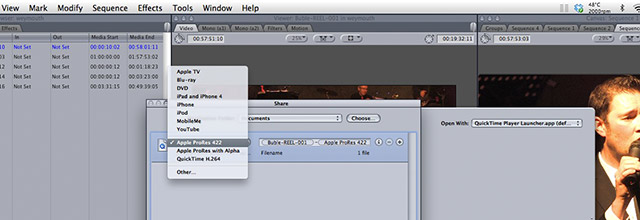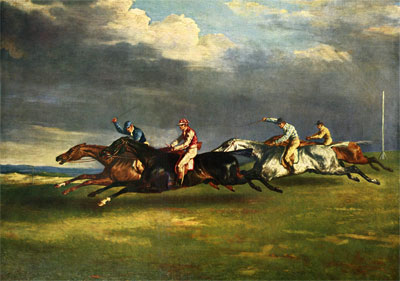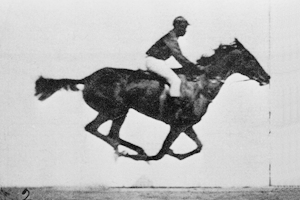What’s your #purplecow?
Web Video Marketing for your Business
 Imagine going out into the countryside with family or friends and you drive past a field of cows. You might comment, “Oh, look! There’s some cows over there”, but then you’ll drive on by. The cows were interesting for a moment, but they were soon forgotten.
Imagine going out into the countryside with family or friends and you drive past a field of cows. You might comment, “Oh, look! There’s some cows over there”, but then you’ll drive on by. The cows were interesting for a moment, but they were soon forgotten.
Imagine though that this day, you drive past the field of cows and you notice that in the middle of the herd of brown cows was a purple cow**. This day you wouldn’t drive on by. Instead, you would stop the car, everyone would get out and start tweeting, facebooking and +1ing, they would take photos and post them online. Before long #purplecow would be trending worldwide.
The problem is wherever you go in business today there are plenty of fields of brown cows. Just like the story of the first car journey as you browse online you will see some ‘interesting for a moment’ things, but you’ve soon forgotten them.
For your own business you know that marketing is important, particularly online, but how can you be distinctive? How you can stop being seen as just another brown cow? Is it possible that you have a purple cow in your business just waiting to be discovered?
A couple of weeks ago a purple cow ran past our front door. It wasn’t there for long, blink and you would have missed it, but it was so remarkable that thousands of people stood outside with us and watched and cheered as an aluminium alloy stick with a flame on top was carried past.
The Olympic Torch Relay has captured attention in the UK for the last two months as millions of people across the nation have come out to line the streets to see it go by. The truth though is that the people didn’t come out to see a stick, they had come to witness a story and watch mostly ordinary people being part of it.
Everybody loves a good story and a story told well goes beyond communicating facts to engaging and influencing us at an emotional level. But whilst you may feel that what your business does is pretty unremarkable just like that field of brown cows, the truth is we all have a purple cow story we can tell.
You may have a particular product that solves a problem in a unique way. Or maybe you run a service-based business that provides extra special service. I’m sure if you think about it for a while there are all manner of things that you do that you can turn from being brown to purple, but how can you do that effectively?
You need to tell a story. In today’s busy and competitive online world, video is perfect for story-telling and is one of the best investments you can make for marketing your business.
Here’s why…
- A video on your website helps to differentiate what you do from your competitors. It helps to show off your purple cow.
- Video is more effective at engaging visitors to your website. Web marketers talk about the 8-second rule which is the length of time you have to convince a visitor to stay on your site before they click away. Video helps you to do that as people are more likely to watch a 30-60 second video than spend a few seconds reading and scanning a web page.
- Video is an excellent way for your customers to get to know you and understand how you can help them. Video helps to give your website and your business personality. People buy from people they know, like, and trust. Online video helps you to show that.
- Online video when optimised correctly gives you a far higher chance than text of helping your site rank well in search engines. Getting a first-page Google result is harder than ever, but as more of page 1 has been given over to “blended” search results – displaying videos and images towards the top of the page – you have an opportunity using video to be there.
- After Google, YouTube is now the world’s second largest search engine. The only way to be seen on YouTube is through video.
Video isn’t just a passing trend.Video is here to stay. Video can help you to harness the power of story-telling in your business marketing.
#browncow or #purplecow. Which will you choose?
**Adapted from “Purple Cow: Transform Your Business by Being Remarkable” by Seth Godin.
Cracking Media work with businesses and organisations to help promote their products and services online through video. You can see some samples here.
If you would like some help finding your purple cow or to discuss ideas for marketing your business using online video, please email info@crackingmedia.com or give us a call on 01202 532522.
Responses to What’s your #purplecow? Web Video Marketing for your Business George Rashbrook says: That’s a great article, Peter. It really illustrates the importance of standing out from the crowd in the competitive business arena. Thanks for sharing it! Reply Peter Lunn says: Thanks for your feedback George. I hope it encourages business owners to look for the purple cow in their business and maybe even find two or three of them – who knows! All the best to you and your business. Reply
 Online Video Marketing Blog Content
Online Video Marketing Blog Content
 DSLR Video – Pros and Cons
DSLR Video – Pros and Cons



 Prior to the late 19th century, most pictures of galloping horses showed the horse with both of their front legs extended forward and both their hind legs extended to the rear. To our eyes today those pictures look old-fashioned, but to most of the people of the day, that was how they thought a horse galloped. They didn’t know any better. That was until a man called Eadweard Muybridge proved otherwise.
Prior to the late 19th century, most pictures of galloping horses showed the horse with both of their front legs extended forward and both their hind legs extended to the rear. To our eyes today those pictures look old-fashioned, but to most of the people of the day, that was how they thought a horse galloped. They didn’t know any better. That was until a man called Eadweard Muybridge proved otherwise.

 Imagine going out into the countryside with family or friends and you drive past a field of cows. You might comment, “Oh, look! There’s some cows over there”, but then you’ll drive on by. The cows were interesting for a moment, but they were soon forgotten.
Imagine going out into the countryside with family or friends and you drive past a field of cows. You might comment, “Oh, look! There’s some cows over there”, but then you’ll drive on by. The cows were interesting for a moment, but they were soon forgotten. There are some common misconceptions held by website owners. Changing these ideas and using proven solutions will help you improve your Internet strategy and bring in customers more effectively.
There are some common misconceptions held by website owners. Changing these ideas and using proven solutions will help you improve your Internet strategy and bring in customers more effectively.